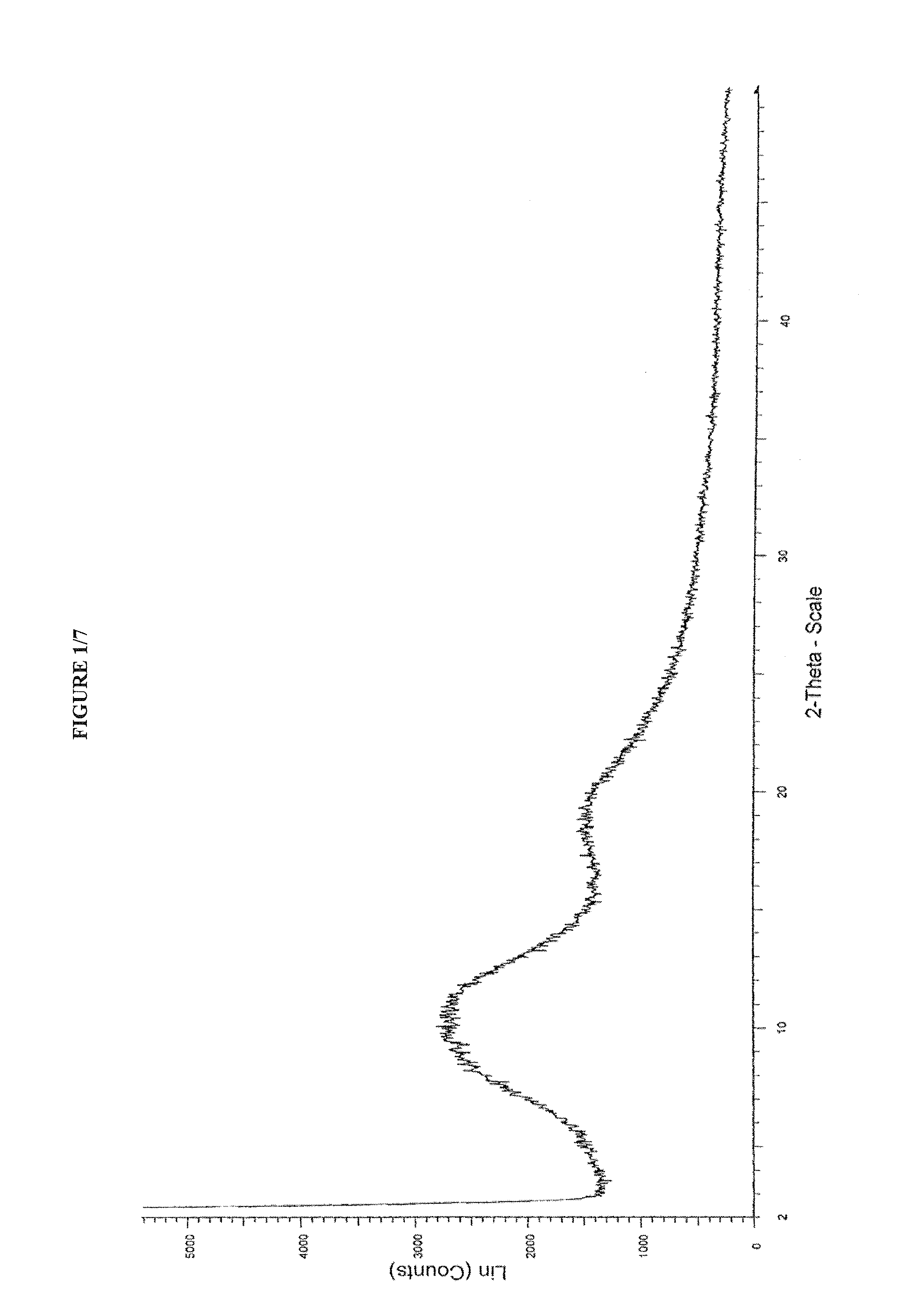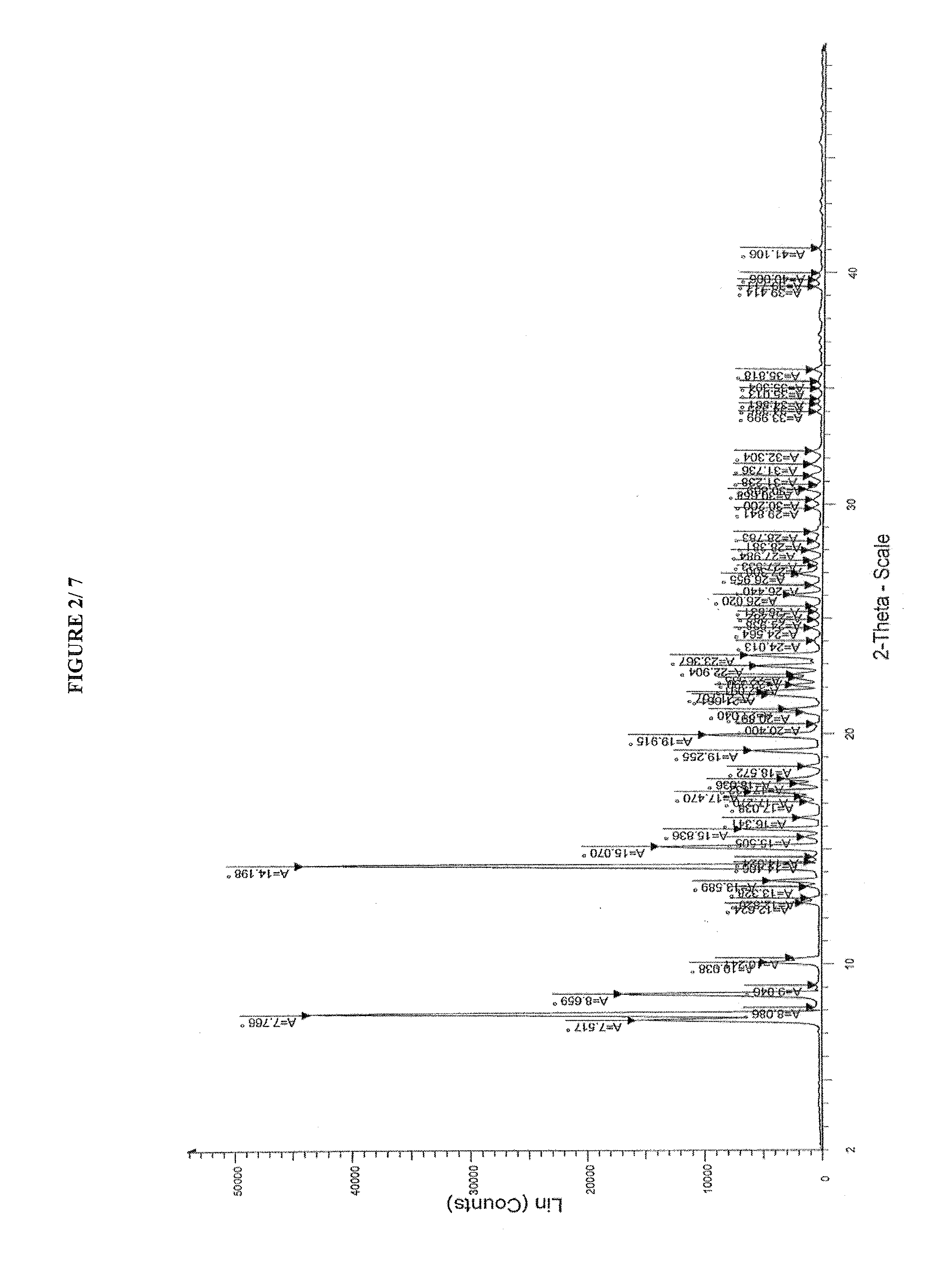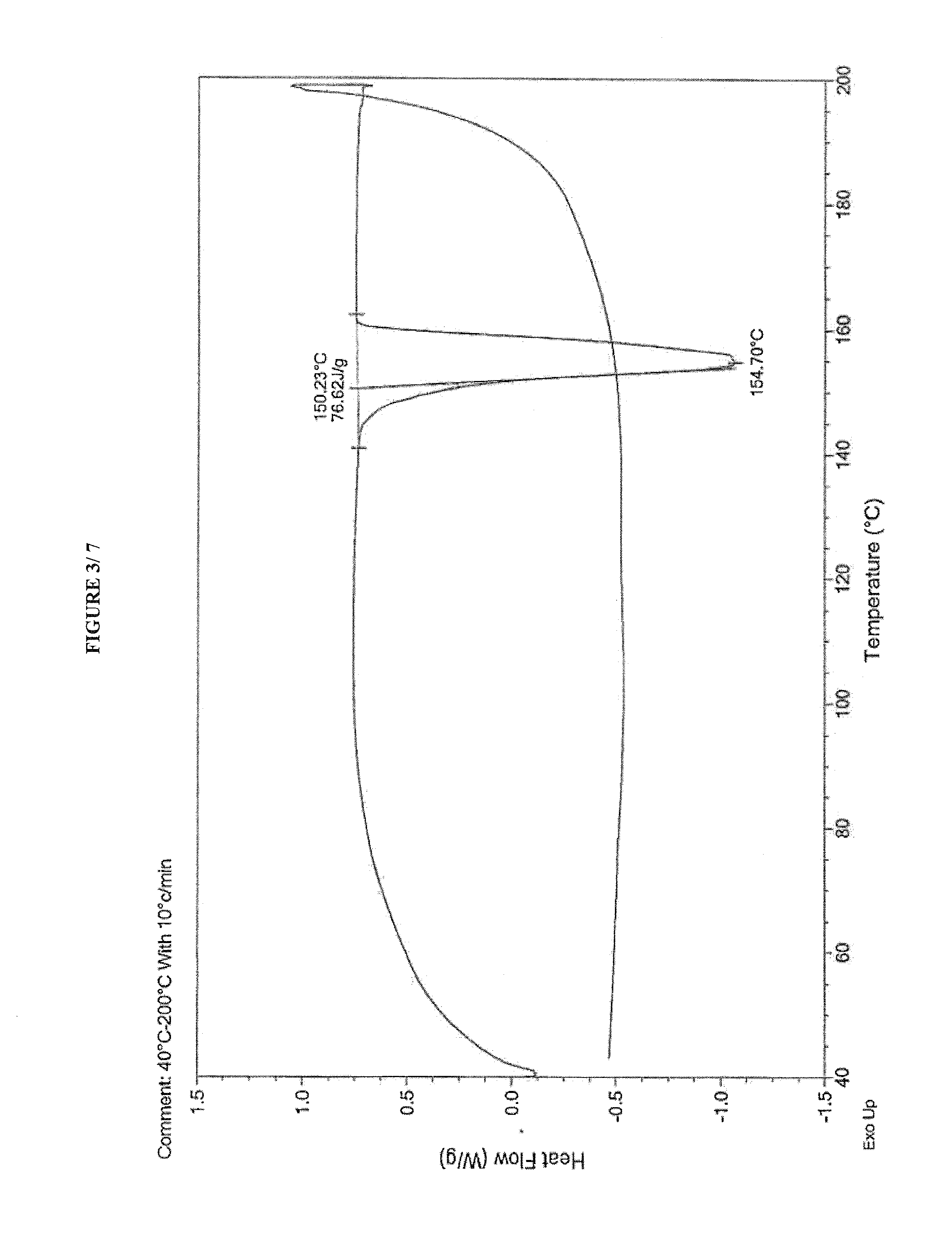Process for preparing amorphous cabazitaxel
a technology of cabazitaxel and cabazitaxel, which is applied in the field of process for preparing amorphous cabazitaxel, can solve the problems of inability to predict the existence and possible number of polymorphic forms of a given compound, and the inability to achieve the effect of “standard” procedures and therapeutic effects
- Summary
- Abstract
- Description
- Claims
- Application Information
AI Technical Summary
Benefits of technology
Problems solved by technology
Method used
Image
Examples
example
Reference Example-A
Process for preparation of Cabazitaxel
STEP-A: Preparation of 2′ triethylsilyl protected Cabazitaxel
[0096]
[0097]A solution of Lithium bis(trimethylsilyl) amide (LiHMDS) (0.9 M / THF, 11.7 ml, 10.4 mmol) was added drop wise over 5 min to a stirred suspension of 7,10-Dimethoxy 10-DAB-III (SM1) (5.0 g, 8.7 mmol) in THF (125 ml) at −10 to −5° C. under nitrogen atmosphere. The reaction mixture was stirred for 5-10 min at −10 to −5° C. under nitrogen atmosphere. Added triethylsilyl protected lactam (SM2) (5.0 g, 13.1 mmol) to the reaction mixture at −10 to −5° C. over a period of 5 min. The reaction mixture temperature was raised to 20-25° C. and stirred for lh. The reaction mixture was cooled to 10-15° C., quenched with saturated ammonium chloride (100 ml) and extracted with ethyl acetate (100 ml). The organic layer was washed with water followed by saturated sodium chloride solution. The organic layer was dried over sodium sulphate and concentrated to yield crude triethy...
reference example-b
Process for Preparation of Cabazitaxel
[0102]Cabazitaxel used as starting material in the invention of the present application, can also be synthesized according to the process mentioned in US 6,331,635 B1 which has been incorporated herein by way of reference. The process mentioned in U.S. Pat. No. 6,331,635 B1 is summarized in the following scheme:
example-01
Preparation of Cabazitaxel diisopropyl ether Solvate (I) i.e. Form-SD
[0103]
[0104]2.0 g Cabazitaxel in 4.0 mL methanol was charged in to a 100 mL round bottom flask (RBF) at ˜25° C. The reaction mixture was stirred for 10 mins at this temperature, followed by addition of 40.0 mL diisopropylether. The resulting slurry was stirred for 1 hr. The solid obtained was filtered and washed with 4.0 mL diisopropylether. Then the solid material obtained was suck dried for 30 mins.
[0105]The solid material obtained above was re-transferred into 100 mL RBF containing 4.0 mL methanol at ˜25° C. Then the temperature of reaction mixture to was raised to about 45° C., wherein stirring was performed for 10 mins while keeping the temperature constant. Stirring was followed by slow addition of 12.0 mL diisopropylether to the reaction mixture over a period of 35 mins. After the completion of diisopropylether addition, the reaction mixture was stirred for 1 hr keeping the temperature constant. Then the rea...
PUM
| Property | Measurement | Unit |
|---|---|---|
| temperature | aaaaa | aaaaa |
| temperature | aaaaa | aaaaa |
| temperature | aaaaa | aaaaa |
Abstract
Description
Claims
Application Information
 Login to View More
Login to View More - R&D
- Intellectual Property
- Life Sciences
- Materials
- Tech Scout
- Unparalleled Data Quality
- Higher Quality Content
- 60% Fewer Hallucinations
Browse by: Latest US Patents, China's latest patents, Technical Efficacy Thesaurus, Application Domain, Technology Topic, Popular Technical Reports.
© 2025 PatSnap. All rights reserved.Legal|Privacy policy|Modern Slavery Act Transparency Statement|Sitemap|About US| Contact US: help@patsnap.com



